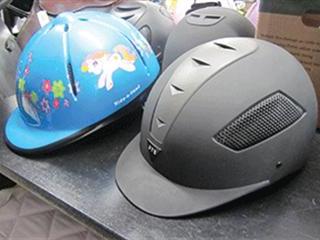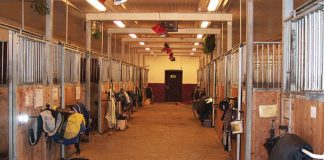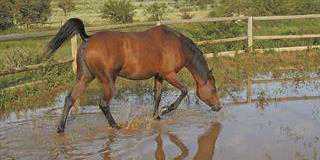
Some 60% of horse-rider deaths that occur in horse sports are due to head injuries, which can also lead to concussion, memory loss, epilepsy and learning disabilities. Children under the age of 14 are particularly vulnerable, as their skulls are soft and damage is more severe to a developing brain. Yet one often sees South African riders galloping around without hard hats. Peer pressure is severe among teenagers who ride and some veterans make fun of newcomers who use protective headgear.
Worldwide, head injuries are more common in those who hack out for pleasure, chiefly because the International Equestrian Federation insists that competitive riders wear approved headgear. Since the Jockey Federation in the US enforced the same rule in racing, head injuries have almost ceased. In Britain, better helmets reduced head injuries in riders by 46%, and were made obligatory for children at Pony Club meetings.
Scientists estimate a fall of 0,5m or an impact at about 5km an hour can shatter a human skull. Since a horse’s back is 1,5m or more above the ground and it can canter at 30km, protective headgear is vital. According to the South African Bureau of Standards (SABS), there are no ISO (international) standards for protective helmets for equestrian activities. In cases where no ISO standard exists, SABS will adopt a suitable EN (European) standard as a South African National Standard (SANS).
Be that as it may, there are currently no SANS standards (adopted or otherwise) for protective helmets for equestrian activities. Standards that do exist include EN 14572 High Performance Helmets for Equestrian Activities that is in common use in European Union member states, and AS/NZS 3838 Helmets for Horse Riding and Horse-Related Activities that is used in Australia and New Zealand.
Most of these standards specify minimum performance criteria for equestrian helmets, and describe test methods to determine impact attenuation, resistance to penetration and so forth. In the USA two standards, ASTM F 1163a Standard Specification for Protective Headgear Used in Horse Sports and Horseback Riding, and ASTM F 1446a Standard Test Methods for Equipment and Procedures Used in Evaluating the Performance Characteristics of Protective Headgear, appear to be in common use.
Standard gear used to be the old fashioned “crash-cap”. Having landed on one a few times over the years, I can testify it does give protection. But it’s very unstable and if the back rests on the neck vertebra you can literally break your neck. That’s what happened to Superman actor Christopher Reeve. Cycling helmets are more stable, and if worn correctly low down on the forehead and fastened so they don’t “rock”, they’re certainly better than nothing.
Unfortunately, the correct type of helmet is expensive. Colourful models are popular for showjumping and endurance, but the darker type is still preferred for dressage and showing. Under SANEF rules, no competing rider, except in the western disciplines, may ride even in the warm-up arena without protective headgear, on promise of being eliminated from the show. Western riders must ride with a genuine western hat (not a cap). All children and juniors, even in Western classes, must wear protective headgear at all times when mounted.













